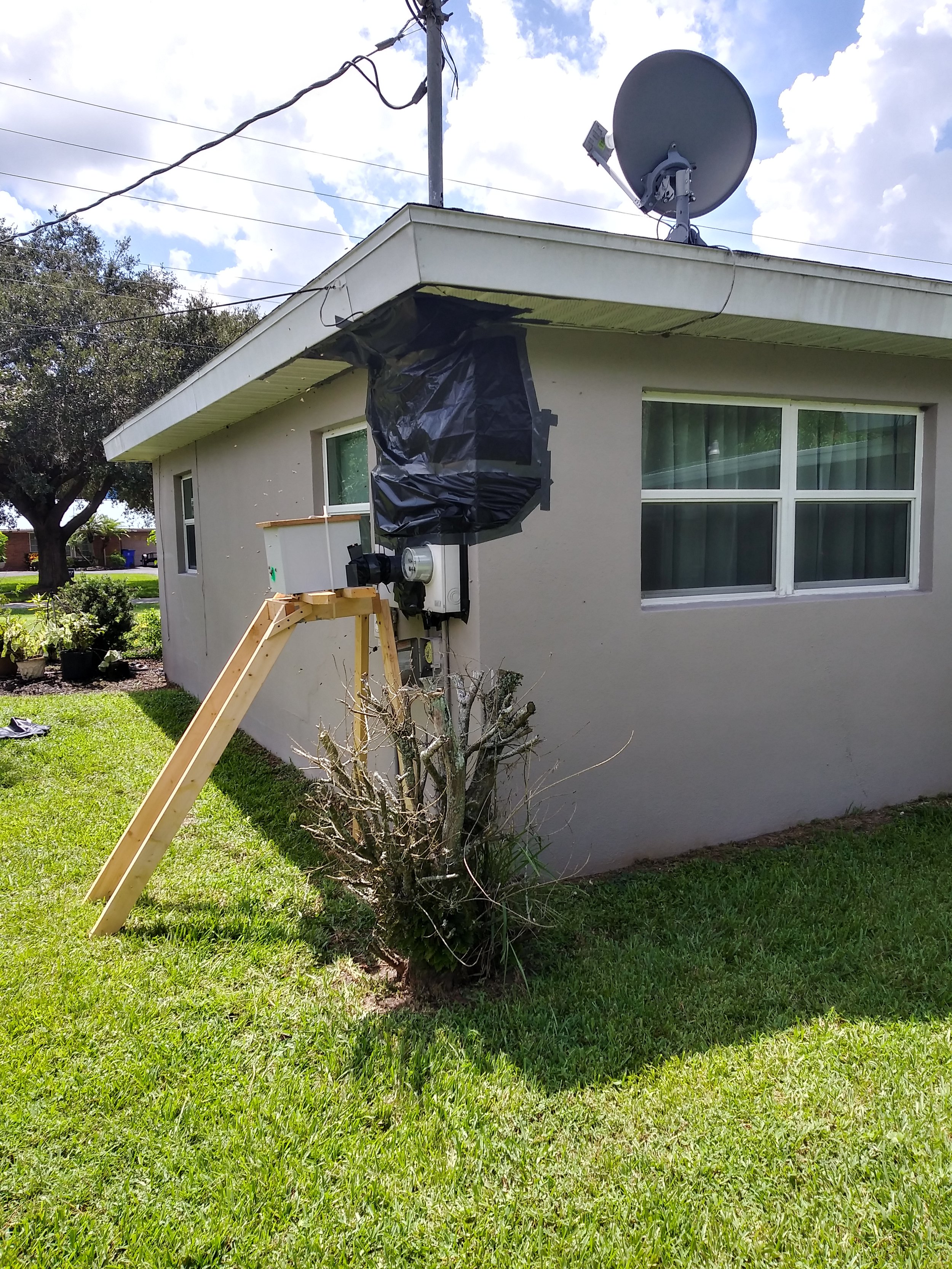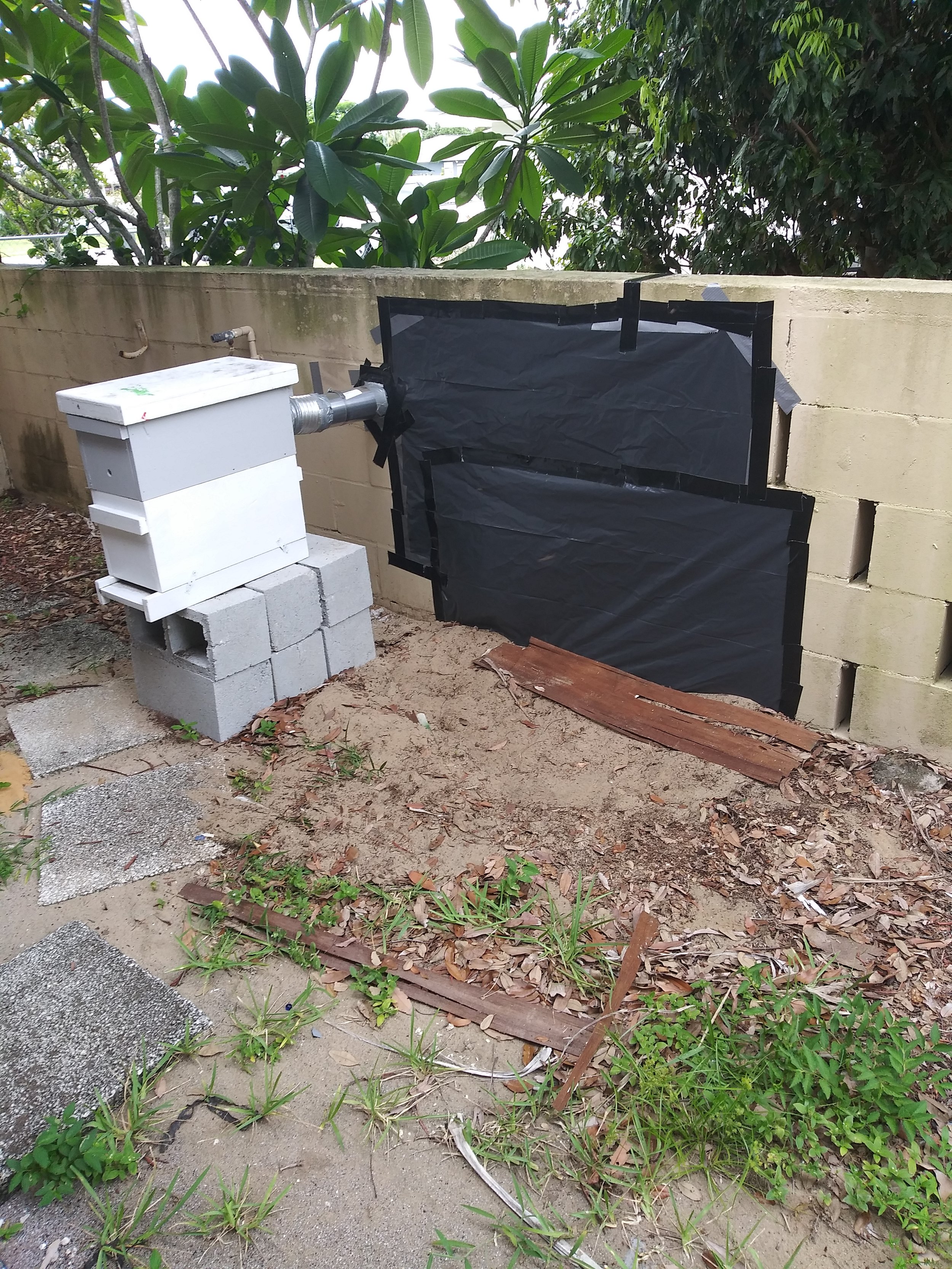
Honey Bee Removal and Relocation: An Overview
Always wear PPE! Feral bees are unpredictable, and the removal process is rarely pleasant for them. Expect them to be defensive.
Stay hydrated, and be aware of the signs of heat sickness. Take breaks to cool off whenever needed.
The first step of any removal is a consultation.
Beekeepers can utilize tools like laser thermometers and stethoscopes to get an idea of nest dimensions.
This is a good opportunity to identify restrictions, such as electrical access.
Depending on the structure, beekeepers typically perform either a cut out, or a trap out. Both techniques have their challenges.
There will be aftercare.
Following the removal, homeowners that do not bee proof the empty nest site will repeat this experience.
Swarm traps are becoming an increasingly amenable option to prevent reinfestation, but they do not work if the nest site is not properly bee proofed.
Cutting bees out of a structure is the quickest approach, but also the most laborious.
Essentially, the beekeeper gains access to the nest and then physically removes the comb, brood, and bees.
“Tools of the trade” vary wildly, but most folks utilize some sort of bee vacuum. A hive to rehome the bees is necessary, including empty frames into which comb can be secured with rubber bands.
Trap outs are a gentler alternative, but take a much longer time.
Bees can be encouraged to leave a structure if they can be successfully reduced to a single hive entrance. This can be done using tape, steel wool, plastic sheeting, and hardware cloth. Then a trapping device is applied, such as a cone.
Foragers that leave the hive are unable to reenter, and the colony absconds once they don’t have enough resources to sustain their growth.













